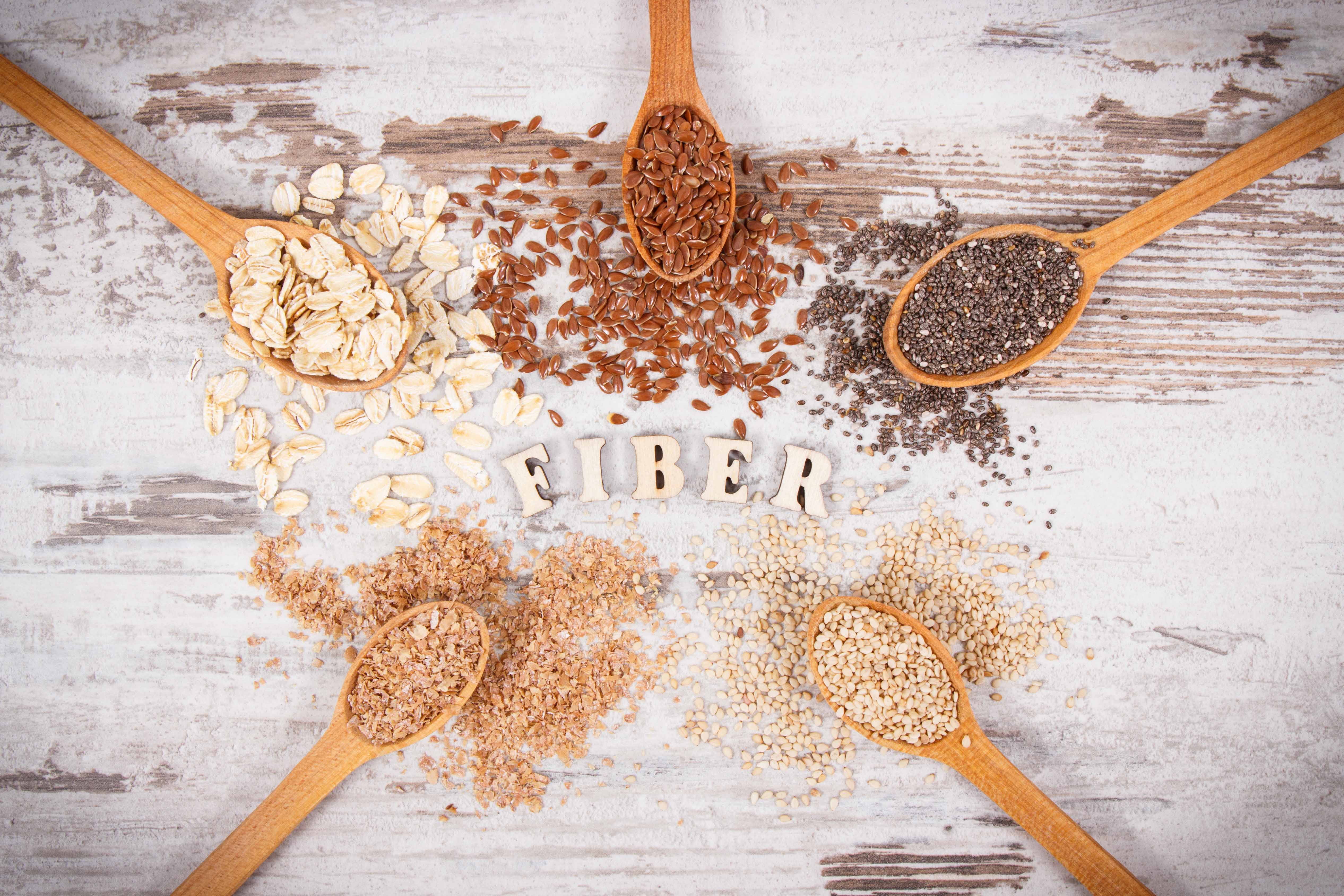
Importance of Fiber
For years, studies have linked a high-fiber diet with lower colon-cancer rates. We now know that fiber also helps to reduce our risk for metabolic diseases, atherosclerosis, high blood pressure, high cholesterol, insulin resistance, ischemic stroke, diverticulitis, irritable bowel syndrome, and even gallbladder disease.
Fiber, also known as roughage, is made up of cellulose, lignin, and pectin, which makes it resistant to the actions of our digestive enzymes, rendering it indigestible by our stomach enzymes, therefore, traveling through our lengthy intestines and into our colon.
Our colon has a fantastic ecosystem, comprising of immune cells, bacteria, nerve cells and more, that needs nurturing and good cleansing. Our colon is not only a depositary of byproducts, but a factory of metabolic and immunologic potential, and therefore produces hundreds of byproducts and toxins. Fiber is one dietary product that can help us stay lean, fit, and healthy through its nurturing as well as mechanical functions.
By increasing fiber content in a meal, weight loss can be achieved. Fiber reduces the overall caloric energy of carbohydrates and overall metabolic load. Fiber directly feeds a class of healthy gut bacteria. These bacteria release a chemical called "butyrate" in our intestines, which directly impact the health of the intestinal-nervous and immune system. Research also shows this short-chain fatty acid, butyrate, also helps stimulate a glucose-lowering hormone called GLP-1, while other studies link butyrate to healthier brain function.
Despite advances in nutritional science regarding fiber, the bulk of our food sources are grossly deficient in it. We all must take extra care to boost our fiber intake to reach the USDA recommended daily intake of 30 grams daily (50 grams per day is even better).
Getting Enough Fiber
Whole Wheat Bread
Most whole wheat and multi-grain bread products contain less than 4 grams of fiber per slice of bread, therefore delivering a heavy carbohydrate load without the fiber to balance the starch (sugar) content. A couple of exceptions are Trader Joe’s multi-grain bread containing 6 grams per slice, and Ezekiel 4:9 flaxseed sprouted whole grain bread which has 4 grams per slice. The best rule of thumb is to choose a bread or cereal containing 5 grams of fiber for every gram of carbohydrates. Some good tips on how to add fiber to homemade bread, besides using whole wheat flour, is to add wheat germ or wheat bran, oats or, barley, buckwheat, or rye.
Vegetables, Fruits, and Grains
Soluble fiber seems to confer the best protection against elevated cholesterol. The most viscous and soluble fibers are found in barley, oats, sea vegetables, shiitake mushrooms, and other foods, as well as the pectins found in the skins of cherries, grapes, berries, citrus fruits, and other foods. Sprinkling grains, like wheat bran or oats, over fruits and adding them to smoothies is also an excellent option.
Add Water
It is also worth noting that fiber can do its job more efficiently if we drink plenty of water. Without water, fiber can cause constipation, bloating, and/or gas. Increase the amount of fiber in your diet and drink more water. You should soon experience benefits like weight loss, a healthy gut, and a decreased risk of diseases.
Although the debate about fiber’s health benefits continues, research unequivocally maintains its stance on the health benefits of eating more fruits, vegetables, legumes, and whole grains in lowering the risk of diabetes, obesity and multiple cancers.
I am confident that a diet rich in whole-foods, that doesn't rely heavily on processed carbohydrates such as white rice, pasta, or potatoes, can offer enough fiber and dietary benefits. So the next time you feel your hunger lights turn on, consider satiating your fiber needs with 1 cup of beans, 1 cup of broccoli, or a cup of quinoa salad. Bon appetite!
References:
Bultman SJ. Molecular pathways: gene-environment interactions regulating dietary fiber induction of proliferation and apoptosis via butyrate for cancer prevention. Clin Cancer Res. 2014;20(4):799–803.
Parvin Mirmiran, Zahra Bahadoran, Sajad Khalili Moghadam, Azita Zadeh Vakili, Fereidoun Azizi Nutrients. 2016 Nov; 8(11): 686. Published online 2016 Nov 7. doi: 10.3390/nu8110686
Vital M, Penton CR, Wang Q, Young VB, Antonopoulos DA, Sogin ML, Morrison HG, Raffals L, Chang EB, Huffnagle GB, Schmidt TM, Cole JR, Tiedje JM. A gene-targeted approach to investigate the intestinal butyrate-producing bacterial community. Microbiome. 2013;1(1):1–8.
Wang X., Liu H., Chen J., Li Y., Qu S. (2015). Multiple factors related to the secretion of glucagon-like peptide-1. Int. J. Endocrinol. 2015:651757. 10.1155/2015/651757